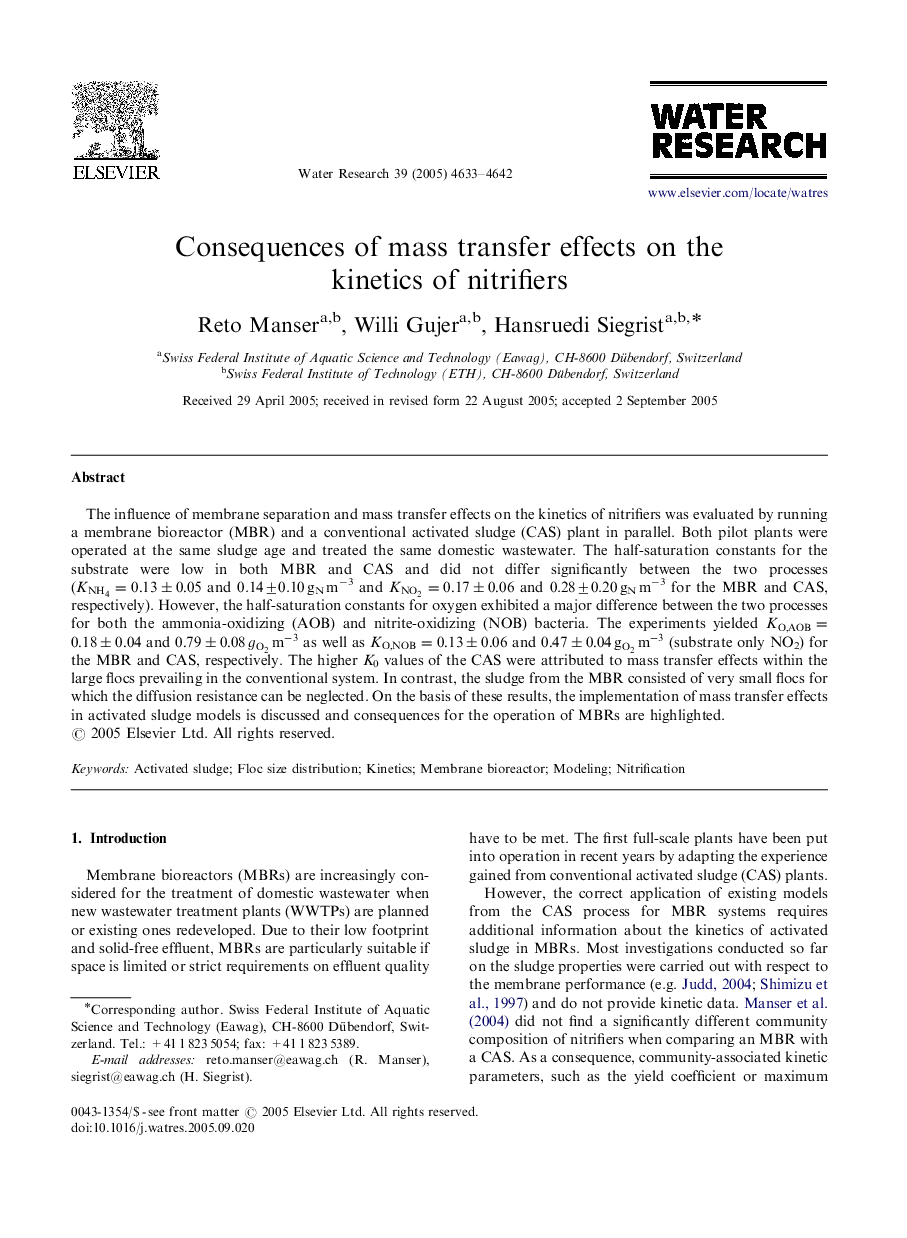| Article ID | Journal | Published Year | Pages | File Type |
|---|---|---|---|---|
| 4484827 | Water Research | 2005 | 10 Pages |
The influence of membrane separation and mass transfer effects on the kinetics of nitrifiers was evaluated by running a membrane bioreactor (MBR) and a conventional activated sludge (CAS) plant in parallel. Both pilot plants were operated at the same sludge age and treated the same domestic wastewater. The half-saturation constants for the substrate were low in both MBR and CAS and did not differ significantly between the two processes (KNH4=0.13±0.05KNH4=0.13±0.05 and 0.14±0.10 gN m−3 and KNO2=0.17±0.06KNO2=0.17±0.06 and 0.28±0.20 gN m−3 for the MBR and CAS, respectively). However, the half-saturation constants for oxygen exhibited a major difference between the two processes for both the ammonia-oxidizing (AOB) and nitrite-oxidizing (NOB) bacteria. The experiments yielded KO,AOB=0.18±0.04KO,AOB=0.18±0.04 and 0.79±0.08gO2m-3 as well as KO,NOB=0.13±0.06KO,NOB=0.13±0.06 and 0.47±0.04gO2m-3 (substrate only NO2) for the MBR and CAS, respectively. The higher K0 values of the CAS were attributed to mass transfer effects within the large flocs prevailing in the conventional system. In contrast, the sludge from the MBR consisted of very small flocs for which the diffusion resistance can be neglected. On the basis of these results, the implementation of mass transfer effects in activated sludge models is discussed and consequences for the operation of MBRs are highlighted.
